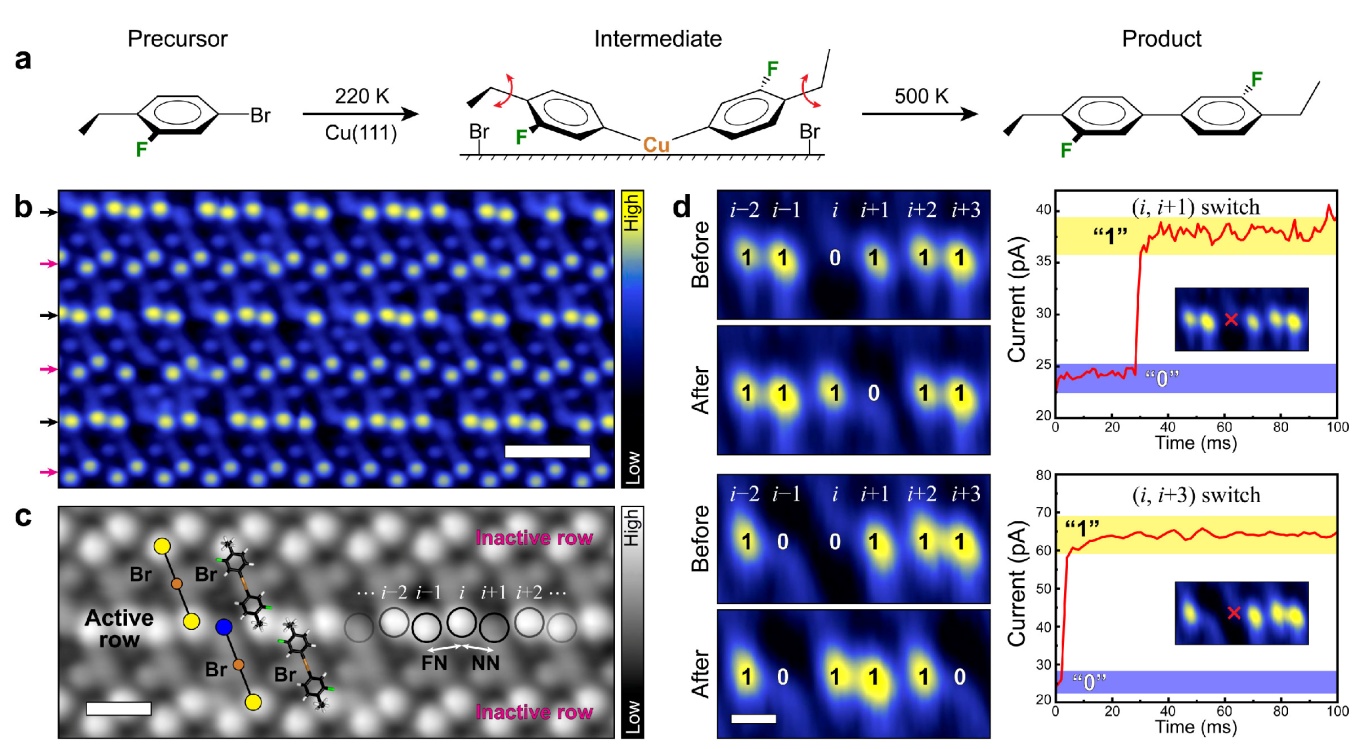



Invited
Correlated Rotational Switching in 2D Self-assembled Molecular Rotor Arrays
1Department of Chemistry, Tufts University, Medford, MA 02155, USA
Molecular devices are capable of performing a number of functions from mechanical motion to simple computation. Their utility is somewhat limited, however, by difficulties associated with coupling them with either each other or with interfaces such as electrodes. Self-assembly of coupled molecular devices provides an option for the construction of larger entities that can more easily integrate with existing technologies. We demonstrate that ordered organometallic arrays can be formed spontaneously by reaction of precursor molecular rotor molecules with a metal surface. Scanning tunneling microscopy enables individual rotors in the arrays to be switched and the resultant switches in neighboring rotors imaged. The structure and dimensions of the ordered molecular rotor arrays dictate the correlated switching properties of the internal sub-molecular rotor units. Our results indicate self-assembly of 2D rotor crystals produce systems with correlated dynamics that would not have been predicted a priori.
These are highly emergent properties because individual, isolated molecular rotor units show random rotational behavior, whereas when coupled together in a self-assembled 2D crystal, correlated rotational switching is observed that would not have been predicted from the behavior of the individual units. The systems reported here are operated at low temperature, however, the barriers could be tuned via the design of the molecules themselves. While a lot is known about structure-function relationships in 3D crystals, 2D crystal engineering is still in its infancy. Moving forward, by measuring the properties of 2D crystals and then making subtle changes with organic synthesis, structure-function relationships can be drawn and emergent properties, like in this case correlated rotor switching, understood. This approach provides a new direction for the field of molecular machines, which while having produced a variety of single molecule devices, lacks ways to couple molecular motion between units and perform higher tasks.

Figure 1: Correlated switching in self-assembled molecular rotor crystals.